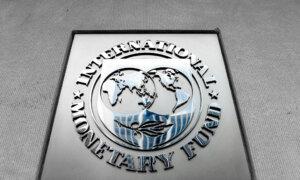A slowdown in U.S.–China trade activity amid tariff tensions is starting to show up in industry data.
Beginning in 2025, companies ramped up their imports from China to avert the White House’s looming tariffs.
The front-running trend had been prevalent across trade data. However, recent figures point to a slowdown in U.S. imports of Chinese goods.
Container vessel traffic traveling to U.S. ports in Southern California has plunged.
In addition, scheduled vessels from China to the United States tumbled by about 33 percent year over year for the week ending on May 10.
Companies have confirmed that shipments to the United States from China are falling.
Hapag-Lloyd, a German container shipping firm, reported that 30 percent of shipments have been canceled.
At the same time, the company noted, there has been sizable demand for consignments from Cambodia, Thailand, and Vietnam.
Industry numbers show a divergence between imports from China and shipments from elsewhere.
However, imports from China in March declined by 12.6 percent from February, it said.
The decline occurred shortly after the United States implemented two different 10 percent tariffs on China in February and March.
“While March volumes remain well below the July 2024 peak of 1,022,913 [twenty-foot equivalent units], China continues to be the U.S.’s top maritime trade partner, though escalating tariffs could disrupt volumes in the months ahead,” the report stated.
Ryan Petersen, founder and CEO of Flexport, said ocean container bookings from China to the United States have cratered by about 65 percent in the three weeks since the new tariffs were enacted.
As a result, ocean carriers have terminated 25 percent of their trips from China in the past two weeks.
He said this could create a challenging scenario comparable to the Red Sea strife in 2024 and COVID-19 pandemic-related supply chain snafus in 2021 and 2022.
“Soon we may find ourselves in a bullwhip scenario where Trump relaxes the tariffs, all those cancelled orders get rebooked, creating a huge surge,” Petersen said on social media platform X.
“And with all the cancelled services and repositioned vessels, there won’t be enough throughput in the ocean network to keep up.”
In another X post, he said, “It’s a strange time in the logistics world as we have to plan for the unimaginable (autarky in the United States) while hedging for regression to the mean (relatively normal trade relations).”
Similar freezing trends are being observed in Chinese imports of U.S. goods.
Bookings for U.S. exports to China fell by more than 5 percent for the week ending on April 15.
The United States has imposed a 145 percent tariff rate on China.
Inventory Buildup
While there have been murmurs of empty store shelves in the coming months, companies have bulked up their inventories in the past couple of months, bringing in more cargo from overseas.
Data have signaled that foreign and domestic companies have been accelerating their stockpiles ahead of U.S. tariffs.
Companies have struggled to keep up with future demand since their fourth-quarter inventories were exhausted as consumers increased their tariff-driven preemptive buying.
“Retailers have been bringing merchandise into the country for months in attempts to mitigate against rising tariffs, but that opportunity has come to an end with the imposition of the ‘reciprocal’ tariffs,” Jonathan Gold, vice president for supply chain and customs policy at the National Retail Federation, said.
If businesses stock up on inventory and consumers scramble to purchase big-ticket items in the first half of 2025, “the ultimate slowdown” in consumption will occur in the second half, Citigroup said in an April 22 note.
“Consumers and firms are likely to bring their spending forward during the next few months to front-run the tariffs, but the second half of the year looks likely to be weak,” the bank stated.
The report noted that there have been robust sales of automobiles and nondurable goods, “generally attributed to a rush to purchase ahead of tariff-related price increases.”
Austan Goolsbee, president and CEO of the Federal Reserve Bank of Chicago, predicted a slowdown later this year. He said an “artificial high” in economic activity in the year’s first half could lead to a summer slump.
“That kind of preemptive purchasing is probably even more pronounced on the business side,” Goolsbee said in an April 20 interview with CBS’s “Face the Nation.”
“We heard a lot about preemptive building-up of inventories that could last 60 days, 90 days, if there was going to be more uncertainty.”
“In this environment of complete uncertainty, our forecast for import cargo will be subject to significant adjustments over the coming months,” the National Retail Federation and Hackett Associates said in the report.
“At present, we expect to see imports begin to decline by May and that they will drop dramatically during the remainder of the year.”
On April 22, Trump told reporters that his 145 percent levy on China was “very high” and would “come down substantially” if a deal was made.
The president said he would be “very nice” to China and avoid playing hardball with Chinese leader Xi Jinping in coming to a deal.
“We’re going to live together very happily and ideally work together,” the president said.
Treasury Secretary Scott Bessent predicted that both sides would de-escalate trade tensions, as the current tariff standoff is unsustainable.
The Epoch Times has reached out to Hapag-Lloyd for comment.







